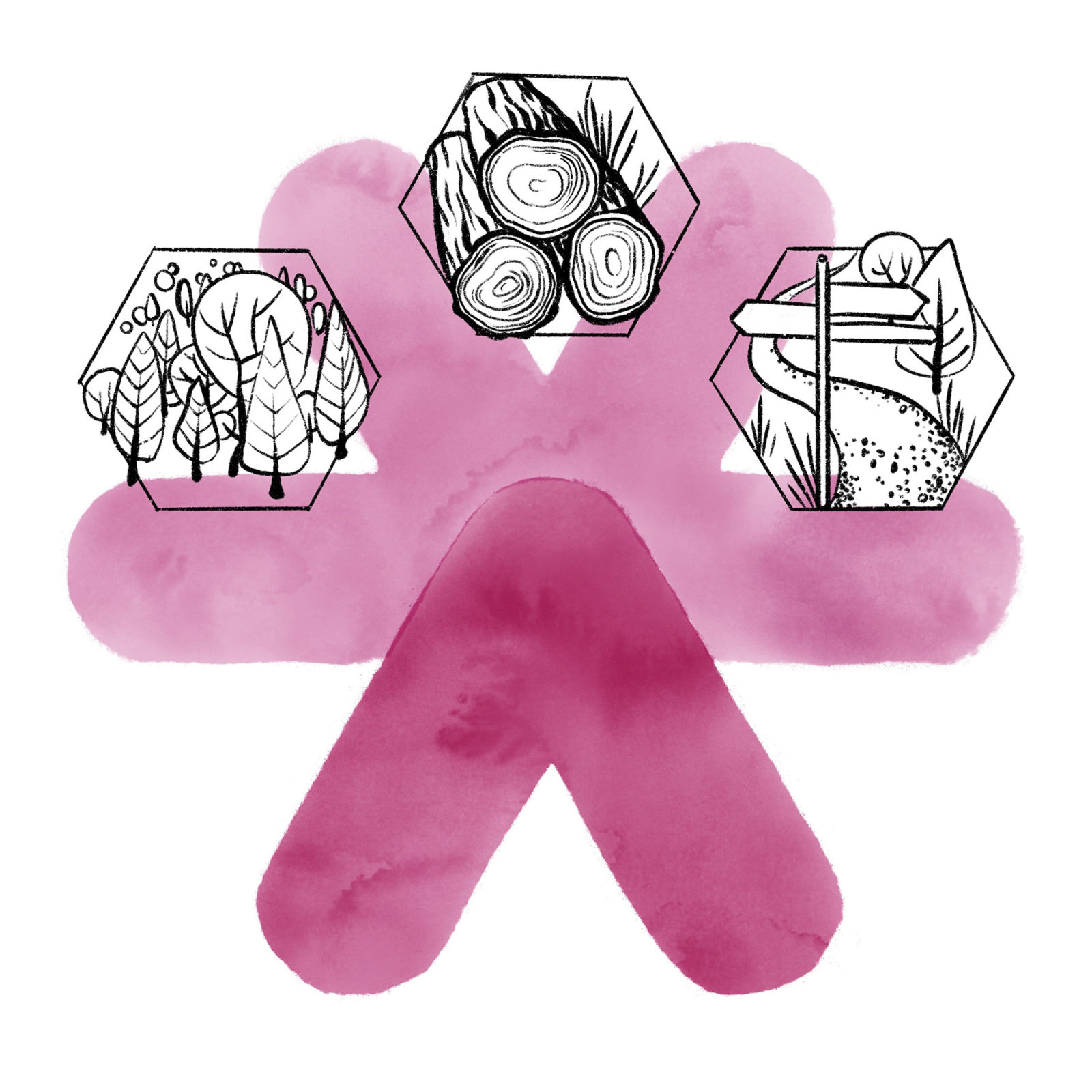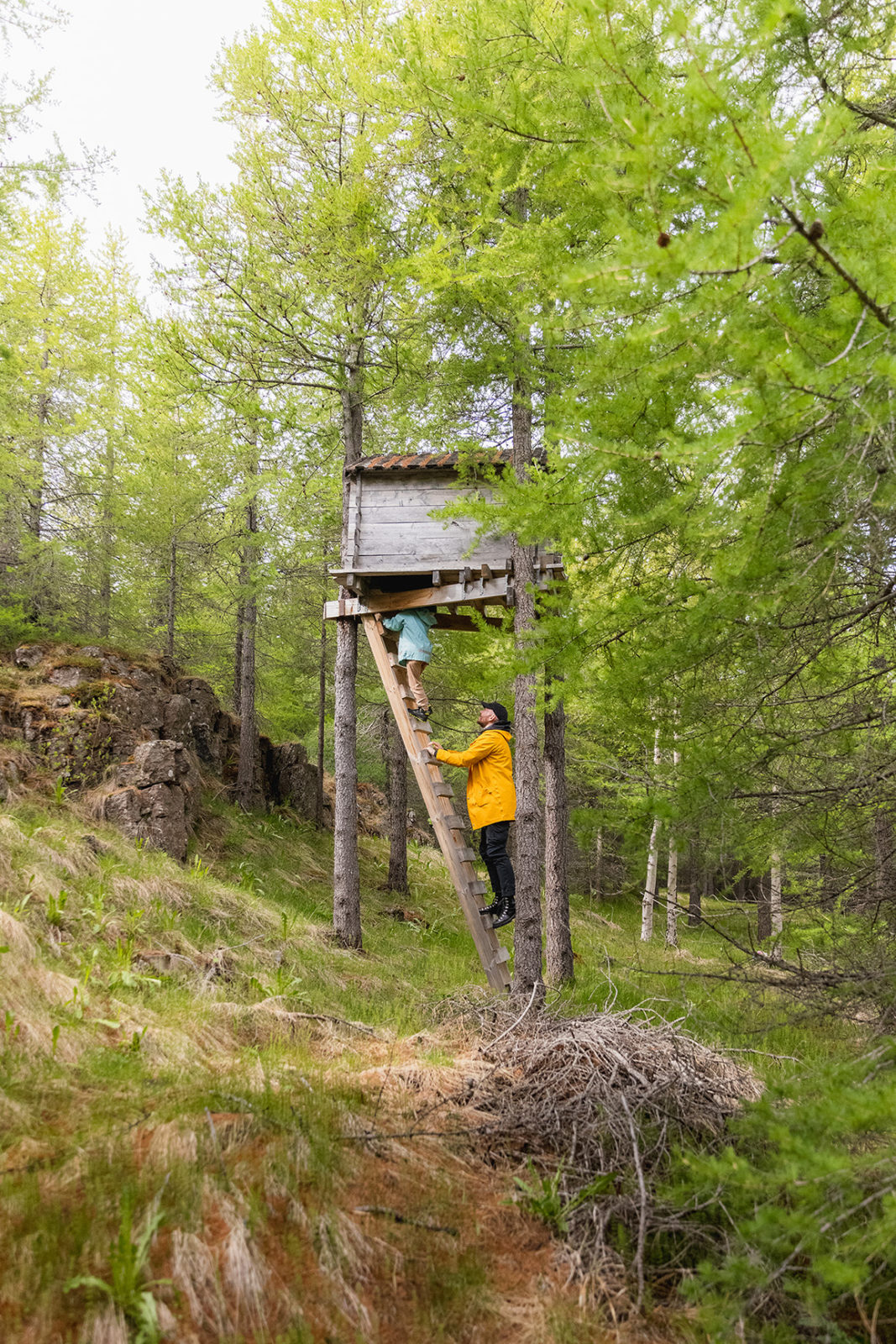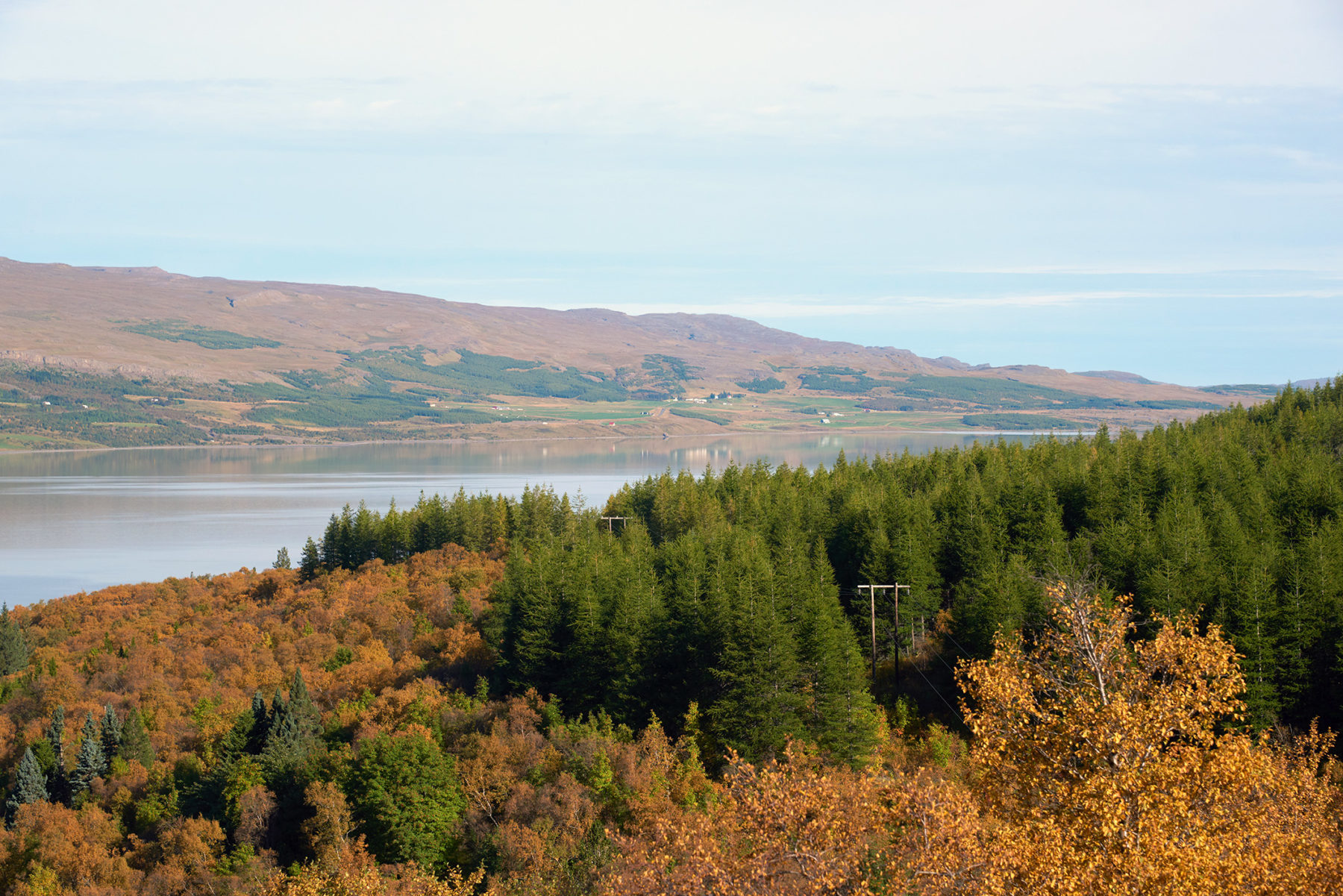4.3 Forests
The residents of East Iceland will increasingly enjoy outdoor activities in forests. Forestry will be enhanced, forests will be maintained and expanded where appropriate, especially near urban areas. Forestry will play an important role in environmental protection and will become a growing and progressive industry in East Iceland.

K. Policy on Forest Resource Development
K.1 Increase the Distribution of Well-Located Sustainable Forests with Various Benefits and Maintain and Expand Natural Forests
Forests should be developed in an organized manner and their good care should be promoted with diverse objectives in mind: carbon sequestration, product production, land reclamation, soil protection, other ecosystem services, and public outdoor recreation.
Emphasis should be placed on land selection for forestry and tree species selection to maintain and strengthen biodiversity, considering the conservation value of bird populations, vegetation, landscape features, archaeological sites, and other heritage sites. Classification of agricultural land with respect to its quality for food or fodder cultivation, landscape analysis, and ecosystem classification should form the basis for planning decisions on agricultural land.
Emphasis should be placed on protecting the natural forests of East Iceland and promoting their expansion.
Efforts should be made to increase knowledge and research on forests, forestry, and their dissemination.
K.2 Forestry Should Promote Land Reclamation and Good Growing Conditions
Shelterbelt cultivation should be used to improve growing conditions.
Forestry should be encouraged to bind soil on eroded and barren land.
K.3 Forests and Forestry Should Play a Key Role in Achieving Carbon Neutrality Goals for the Region
Conservation of forests and forest remnants and the cultivation of forests to bind and maintain carbon stocks should be encouraged.
Adaptability and resilience of forests to climate change and increased carbon sequestration through tree species selection should be promoted.
Forestry farmers should be encouraged to participate in projects for forestry aimed at carbon sequestration.
K.4 Forestry Should Be Used to Reduce Potential Damage from Natural Disasters
The use of forests in protecting against avalanche hazards should be encouraged
K.5 Strengthen Fire Prevention Measures
Emphasis should be placed on addressing fire prevention and response to potential wildfires in regional plans and cultivation plans.

Explanations on Policy for Forest Resource Development
Forests are a key feature of the landscape and agriculture in East Iceland, with a long history of forestry and considerable experience and knowledge accumulated. With continued systematic development of the resource and further enhancement of knowledge, forestry in the region will develop into a strong industry. The industry includes protection, restoration, cultivation, care, utilization, and renewal of forests, as well as production from various forest products. It also involves research, consulting and planning.29
In the draft national forestry plan, emphasis is placed on considering environmental and social factors as well as economic ones in the development and utilization of forests, ensuring sustainability. Based on this plan, regional plans will be developed in collaboration with the Forestry Service, municipalities, and stakeholders, setting common goals for forest development, criteria for selecting areas and tree species, and other cultivation priorities.
The draft national plan prioritizes the establishment of forests to combat rapid climate change, aiming for carbon neutrality in Iceland by 2040.30 An appendix proposal to the national land use policy also emphasizes that forestry should aim to increase carbon sequestration in vegetation and soil.31 This aligns with the goals of the forestry and soil conservation laws, and the Forestry Service has initiated a project to establish a certified process for carbon sequestration through new forestry.32
In addition to carbon sequestration, forestry is intended to support the ongoing development of other quality forests, such as those linked to job creation, ecosystem services, and public health. Existing natural forests need to be protected and their spread promoted to preserve soil and important habitats, ensure water quality, and sequester carbon.33
The appendix proposal to the national land use policy emphasizes that forestry should integrate well with the landscape, based on landscape analysis, ecosystem classification, and the classification of agricultural land in terms of cultivation and other uses.34 Landscape goals are also set in the forestry policy developed by the Minister for the Environment and published by the Forestry Service in 2013. This policy emphasizes increasing knowledge about landscape features, protecting unique landscapes, and using forestry to enhance the landscape through good design and planning.35 The draft national forestry plan also highlights the importance of considering landscape units, unique landscapes, and edges and lines in the landscape when selecting land and planning forestry.36
The current national land use policy directs municipalities to consider the risk of wildfires in their planning, including escape routes and defences.37

L. Policy on Forest Utilization and Value Creation
L.1 Increase Employment Related to Forests
Encourage the production and sale of diverse forest products from East Iceland.
Promote diversity in forestry and good care that leads to high production and maximizes results.
L.2 Increase Innovation in Forest Product Processing
Foster innovation and product development from all forest materials.
Enhance knowledge of forestry and forest products to boost value creation.
Promote cooperation between educational institutions and forestry farmers to enhance knowledge, innovation, and recruitment in the industry.
L.3 Expand the Market for Forest Products from East Iceland
Explore market opportunities for forest products from East Iceland, particularly those provided by transportation links.
Make forests and forest products prominent in the marketing of East Iceland.
Explanation of the Policy on Forest Utilization and Value Creation
In the coming decades, the processing of forest products in East Iceland will increase, making it important to strengthen the knowledge of those engaged in forestry, promote value creation, innovation, and quality in the industry, and find markets for products both domestically and abroad.38 A competitive processing industry needs to be in place to handle the raw material from the forests, and this requires a large and steady supply of timber.39
Three wood processing facilities are currently operating in East Iceland: at Hallormsstaður, Fljótsdalur, and Eskifjörður. Hallormsstaður has comprehensive wood processing, Fljótsdalur produces lumber, planks, cladding, and firewood, and Eskifjörður produces wood pellets, wood chips, and related products.40
There is increasing demand for timber in the construction industry, but it is also possible to produce organic plastics, textiles, medicines, and other products from wood. Other possible uses for forests include food, flavourings, essential oils, honey, Christmas trees, branches, and cones.41
Forests in Iceland have long been popular tourist destinations, especially Hallormsstaður forest. Along with the popularity of camping and outdoor festivals, various services and facilities for tourists have been developed, which will continue to grow as the forest expands and thrives.42

M. Policy on Access and Outdoor Recreation in Forests
M.1 Increase Outdoor Recreation Opportunities for Residents and Visitors in the Forests of East Iceland
Encourage the cultivation and care of forests for outdoor recreation.
Encourage the healthcare sector to use outdoor activities in forests as a therapeutic option.
Work on developing trails, rest areas, and parking to facilitate outdoor recreation for residents and visitors.
M.2 Increase Forestry within and Near Urban Areas
Promote the cultivation of recreational forests both within and on the edges of urban areas.
Explanation of the Policy on Access and Outdoor Recreation in Forests
Forests are excellent areas for outdoor activities. They provide good shelter from weather and wind and have positive effects on physical and mental health. These benefits include safety from floods and pollution, promoting rejuvenation, relaxation, stress relief, exercise, and social interaction. Forestry activities also have positive health effects, and it is important for the public to be able to enjoy forests in various ways.43
There are four national forests in East Iceland: Arnaldsstaðaskógur in Fljótsdalur, Hallormsstaðaskógur, Höfði in Hérað, and Jórvík in Breiðdalur. These national forests feature facilities such as rest areas, trails, tables and benches, restrooms, campgrounds, and marked walking paths, trees, and landmarks.44 They offer various opportunities for outdoor activities and environmental education, with the Forestry Service providing useful educational materials about forests.45
Forests near urban areas are suitable for outdoor classrooms, especially those accessible by walking or biking.46 Trees and forest areas in and near urban areas also help capture particulate matter and improve air quality.47
